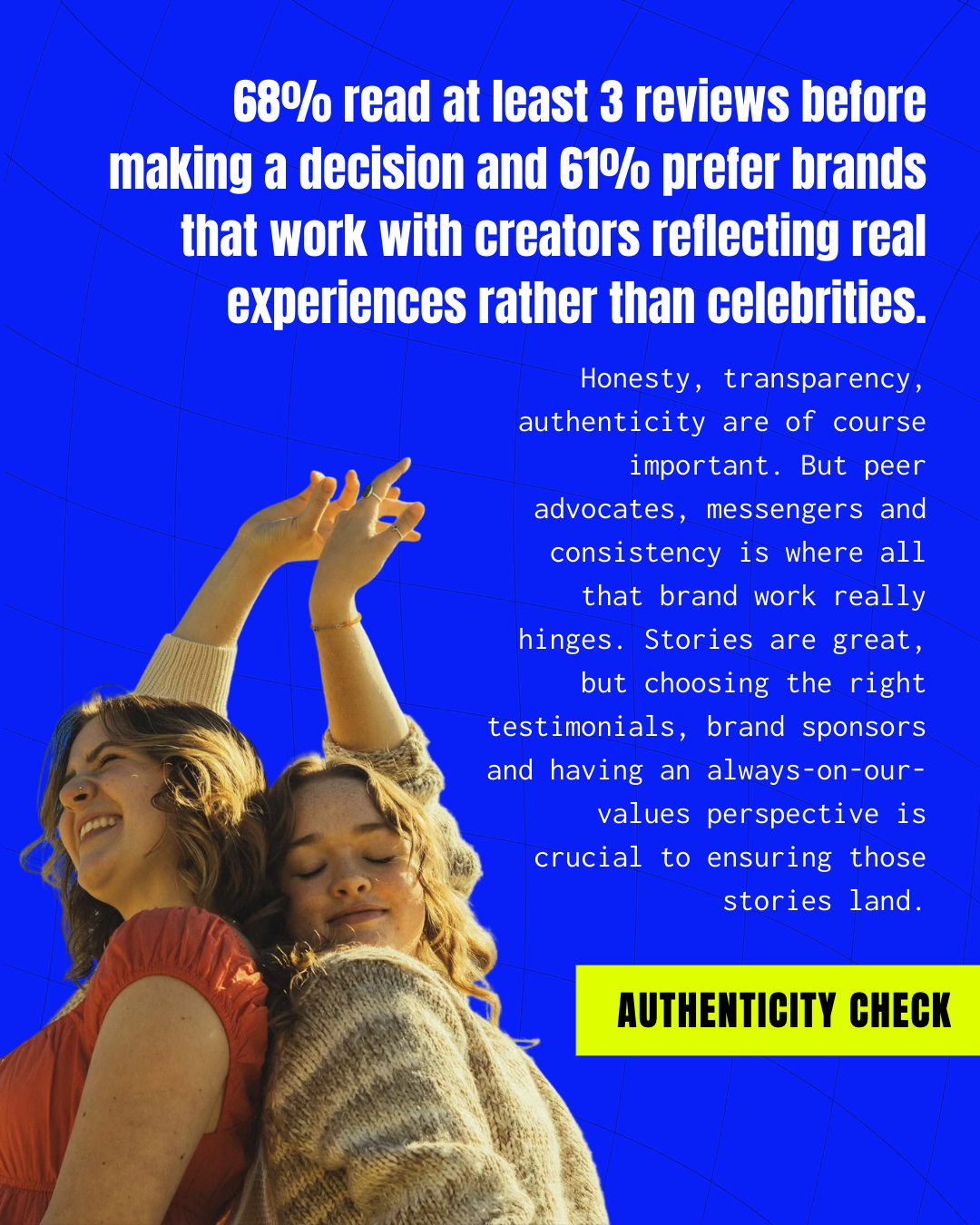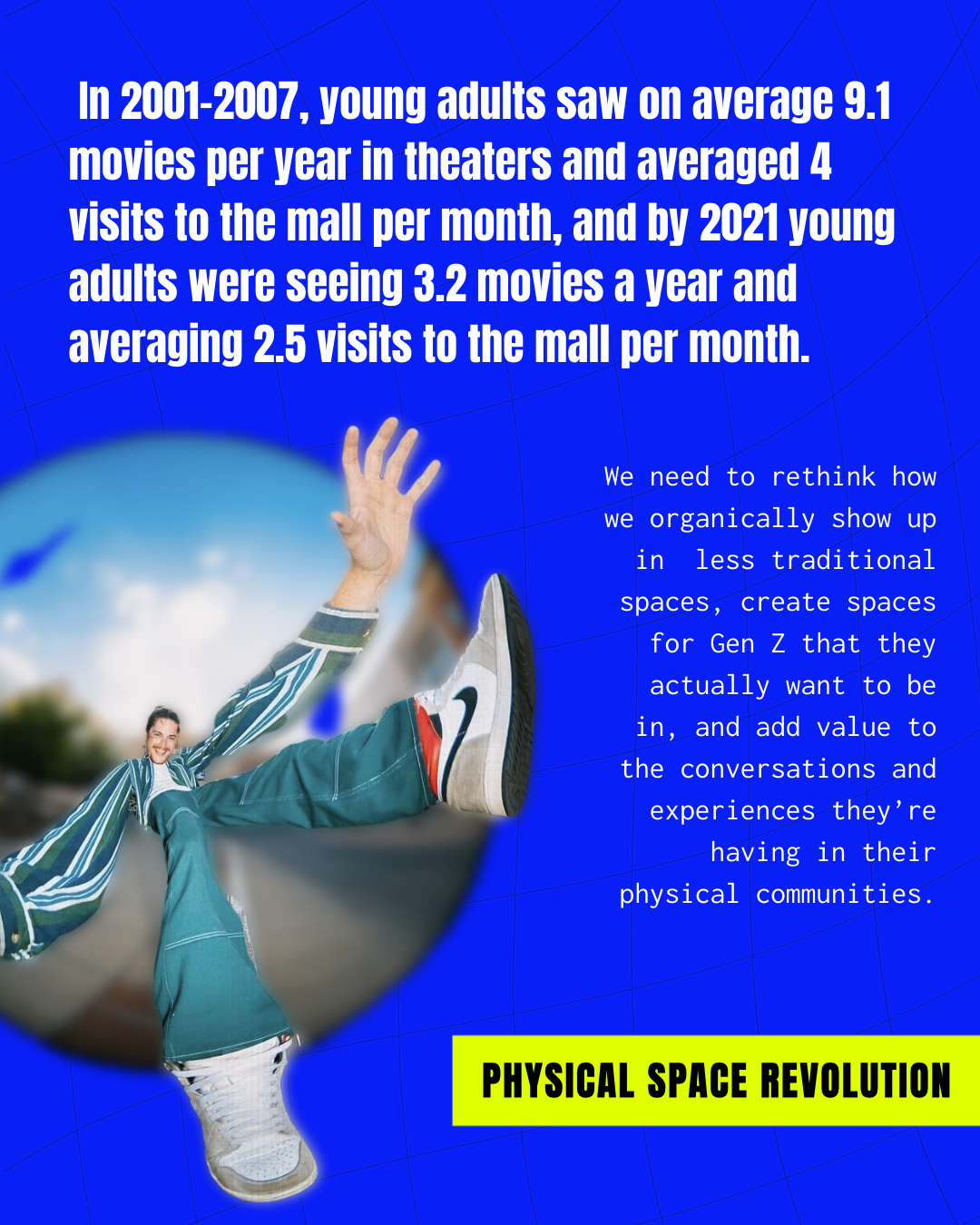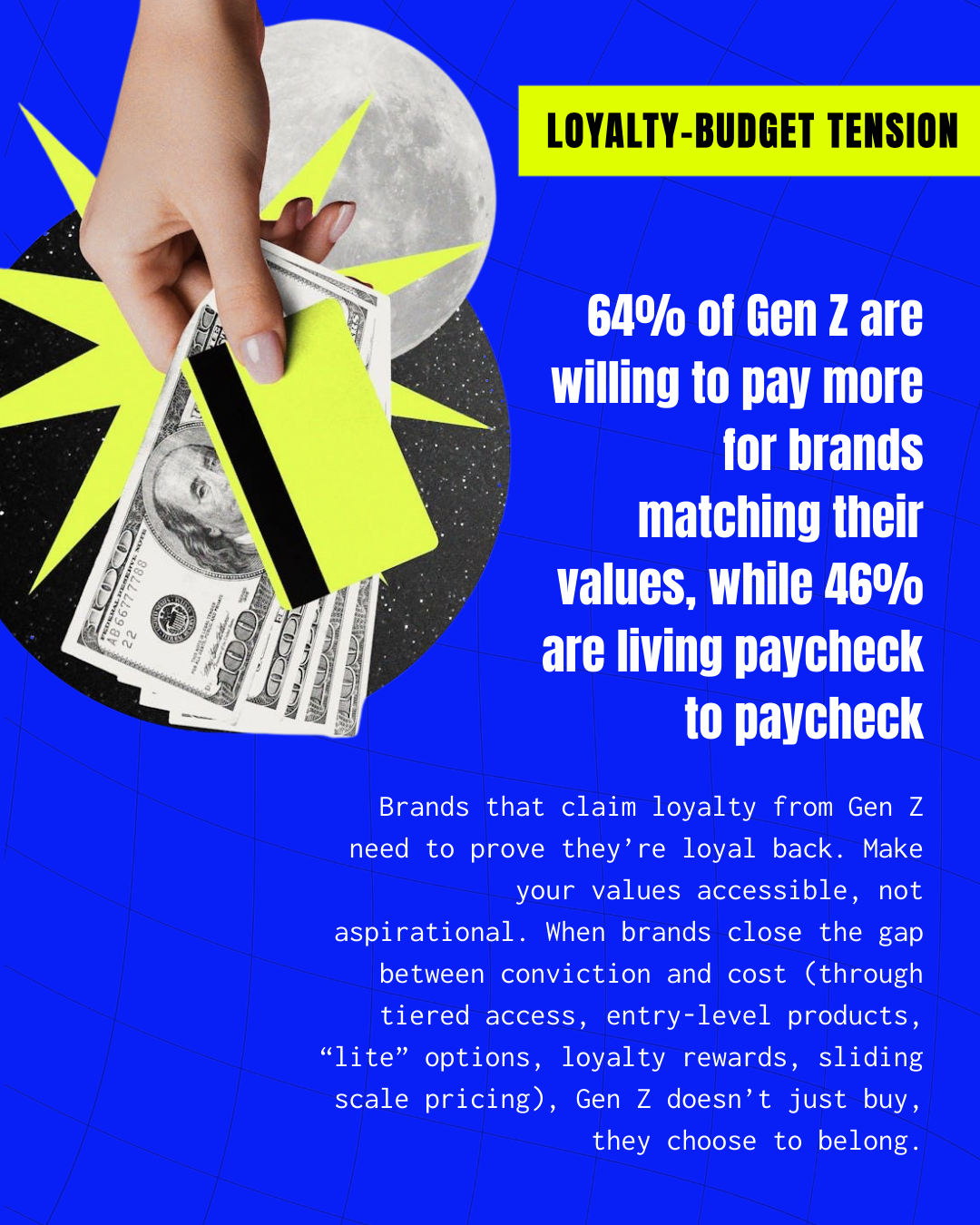Four big shifts reshaping Gen Z marketing
Quick Snapshot: gen z isn't just 'doom scrolling', they're biology and behaviors are shifting. They're spending huge amounts of time online and feeling lonelier than ever. They're looking for brands to be vulnerable, relatable, honest, and deeply human.
The average Gen Zer spends 24-48 hours monthly on TikTok and other social media platforms, and most marketers think they know what's happening here. We probably picture them alone, in their bed, mindlessly scrolling, with something else on in the background. Sure, that’s probably happening, but this view misses a much deeper story. A complex story of their shifting style of connection that we (marketers) and brands should be adapting to. We have 4 insights below that are changing the way we’re looking at our marketing strategies to meet Gen Z right where they are and where they’re headed.
1. Connection Paradox
Data Insight: Gen Z spends an average of 4.5 hours daily on social media, but a massive 73% report feeling lonely despite this constant digital connection.
While we know that Gen Z is the most connected, and yet loneliest, generation in history, we’re now understanding how to navigate this connection gap better. They spend a lot of time building digital connections, but those connections are less vulnerable, more surface, because they live online. Yet their desire for something deeper, more substantial is still there within them. So the way we navigate this is by forcing depth in a surface-level medium, providing emotional access and transparency in a platform devoid of it. The content we create has to do a lot of work, giving them the ease of the scroll with the substance of real human connection.
We must overcompensate for the inhuman nature of the delivery with an over-indexing of vulnerability, relatability, intimacy in the stories we tell and the storytellers that tell those stories.
2. Authenticity Check
Data insights: 68% read at least 3 reviews before making a decision; 61% of Gen Z prefers brands that work with creators reflecting real experiences rather than celebrities.
We know Gen Z (more than other generations) prioritizes value alignment in their brand loyalty. But what you may not know is that they have a finely-tuned research and authenticity radar that most marketing folks underestimate. Essentially, their BS radar is always on and they’re doing their checking. Digital and media literacy is in their DNA, so they are not easily fooled by the conventional marketing trappings or celebrity endorsement. They have an engrained suspicion to an ambitious value proposition, stylized ad copy, and brand-stated commitments. And AI is making this authenticity radar even more crucial. Gen Z can spot AI-generated influencer content, deepfakes, and synthetic brand messaging, and if you get caught using AI without being open about it, good luck to you.
Honesty, transparency, authenticity are of course important. But peer advocates, messengers and consistency is where all that brand work really hinges. Stories are great, but choosing the right testimonials, brand sponsor and having an always-on-our-values perspective is crucial to ensuring those stories land.
3. Physical Space Revolution
Data Insight: In 2001–2007, young adults saw on average 9.1 movies per year in theaters and averaged 4 visits to the mall per month, and by 2021 young adults were seeing 3.2 movies a year and averaging 2.5 visits to the mall per month.
Gen Z isn't abandoning physical spaces, but they're abandoning commercial spaces (movie theaters, malls, bars, etc). They’re opting instead for less conventional gathering spaces (like board game events, wellness gatherings, crafting classes). This represents a fundamental shift in how Gen Z engages in physical community. Previous generations built social lives around spaces that were designed for gathering. But Gen Z builds community wherever they happen to be, and see these gatherings as natural extensions of their online communities. These are more unconventional physical spaces and the experiences are much more tactile and analog.
This physical community re-imagining can be scary for marketers who have reliably counted on traditional physical spaces to push brand and product messaging. Instead, let’s look at it as an opportunity to rethink how we organically show up in these less traditional spaces, create spaces for Gen Z that they actually want to be in, and add value to the conversations and experiences they’re having in these physical communities. The potential is huge.
4. Loyalty-Budget Tension
Data Insight: 64% of Gen Z are willing to pay more for brands matching their values, while 46% are living paycheck to paycheck
A lot of Gen Z are facing brutal economic realities that create impossible choices. They want to remain loyal to brands that share their values and have been loyal to them, but they may not have that financial luxury. They have a lot of conviction, but they lack cash. They’re being forced into trade-offs between survival and self-expression.
Brands that claim loyalty from Gen Z need to prove they’re loyal back. Make your values accessible, not aspirational. When brands close the gap between conviction and cost (through tiered access, entry-level products, “lite” options, loyalty rewards, sliding scale pricing), Gen Z doesn’t just buy, they’re choosing to belong.
What it all means
While 97% of Gen Z relies on social media for purchasing inspiration, they're simultaneously seeking escape from digital isolation to form genuine, empowering relationships. The brands winning this generation aren't just creating content and a funnel… they’re creating emotional, vulnerable content that passes the authenticity check, elevating digital and physical communities, and proving their commitment to them by positively reacting to their lived realities.








.avif)


.avif)








